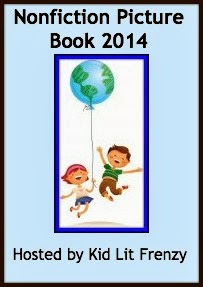
We know that a big part of the CCSS is to include more informational texts into our students' reading. I quickly discovered I had a "gap" in my reading diet - the genre of informational texts! To help me fill the gap this year, I am going to participate in Nonfiction Picture Book Wednesdays! This is a great link-up hosted by Kid Lit Frenzy. Please visit this website to see other educator's link-ups. My goal is to read at least one informational text each week and post information on the blog. The more books and subjects I read, the more I can encourage (my #OLW for 2014) other teachers to use in their classroom!
Our fourth grade teacher take their students on a "road trip" across the United States. They study the different regions of the U.S. Currently, they are in the Southeast. To introduce the students to the devastation of Hurricane Katrina, I decided to use this book:

Eight Dolphins of Katrina
Janet Coleman
I had two objectives for the students:
1. Students will generate questions before and during their reading.
2. Students will write a summary of their reading and incorporate their thoughts and questions.
We used the questioning technique that I had learned a few weeks prior. After reading a statement describing the book, students created a list of questions. I wanted their focus to be generating questions that would further/deepen their thinking when reading the text. After we had our list, we chose three questions that really focused on the story and would help us understand it better.
I divided the book into half and read the first half and stopped to have students summarize their thinking. We have been using Sunday Cummins's book Close Reading with Informational Text to guide our non-fiction responses. Students made a "picture frame" outline on their paper and wrote their notes on the inside of the picture frame. Students wrote a summary, wrote if any answers to our questions had been found and if they had any other questions. The students shared (speaking and listening) with partners and then a few shared out whole group. We did the same process with the second half of the book, taking a little bit longer time looking at the answers to our questions.
This book holds students attention and is a great story of survival. I was initially surprised that the main story used drawings instead of real photographs, but I guess a picture of the Oceanarium might not have been easy to photograph during a hurricane! The students really enjoyed the "scrapbook" at the end of the book with information about the dolphins and real photographs of the dolphins.
CCSS standards covered: RI.1 (ask and answer questions), RI.2 (main idea), RI.5 (review author's craft - how did the author put the information together?)
Students also did routine writing, and worked on speaking and listening goals.
Students were motivated by the topic and were easily engaged and wanted to share their thoughts. So many of our lessons seem to go that way when we found the right book!
Can't wait to see all the other nonfiction books this week!
I can imagine that this would be such an interesting topic for your students. Thanks for sharing how you used this book in the classroom.
ReplyDeleteGreat book to introduce and important event. Thanks for sharing.
ReplyDeleteThat sounds like such a neat activity - taking kids on a "road trip" through the US!
ReplyDelete